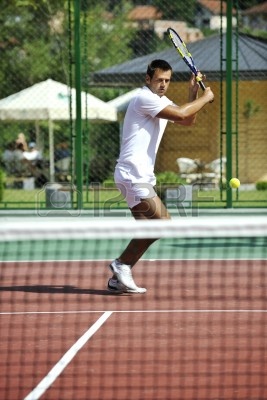Heuristics

Heuristics in Customer Approach
Predictions are continuously generated by the human brain about the surroundings that are based on what it perceives and standardizes about the world. The brain processes these predictions and filters and interprets these informations. In this article, we will review some examples where the consciousness of the brain is influenced by these predictions. Specifically, we will try to propose that similarities of tennis serves, flight paths and utilization of predictive mechanisms in competitive sports enable rapid generation of conscious perceptions and influences awareness in uncertain situations as in customer experience.
Introduction
In perception, the brain transforms signals that are raw into information that predominates behavior of a person. It is not a purely stimulus-driven phenomenon; the brain perceives the world proactively. Endogenous influences such as attention, memory and mood guide perception to ensure that informative representations of the environment are generated as efficiently as possible.
In this review, we focus on the influence of heuristics and predictive mechanisms on perception and application to customer experience. The predictions we discuss are not analogous to the deliberate, elaborative foresight that individuals may engage in when planning for the future (e.g., taking the route to a destination with the least traffic or signals). Instead, we use the term prediction here to refer to expectations about the immediate sensory environment based on previous experience and learning, as in tennis serves and selection of proper flight paths. Through everyday experience, individuals learn many types of regularities in the world, such as associations among items or events. For example, a red traffic light is always followed by a yellow and then a green traffic light. Insofar as the environment is generally regular, it is, to an extent, predictable. Expectations about the environment can be derived from these learned regularities and used to guide sensory processing, as in customer experience.
Relation of Flight Path and Tennis Serve
The forces on a tennis ball interact like a game of a tug-of-war. The combined strength and direction of each of the forces on a tennis ball (weight, lift and drag) determine the curved flight path of the tennis ball (the trajectory). The tennis serve takes advantage of aerodynamic effects. Other than gravity, it is the flow of air around the ball that determines its trajectory when hit at any given velocity, spin, and angle. Forces created by air flow act to decrease velocity in the direction of motion, primarily in the horizontal direction. Thus, aerodynamic forces are responsible for both the angular, diving, hopping, topspin shot and the floating, skidding, backspin slice. Similar principles are applicable to a flight path where lift, drag, thrust and weight are the forces that determine the trajectory or curved path of an aircraft.
Apparently, a study on tennis plays in Wimbledon 2004 has shown that amateur players, for whom the recognition heuristic is more applicable than for tennis professionals, were more successful in choosing the winner of plays in the tournament (72%) than the professionals or tennis experts (66%-69%).
Flight paths are selected by airlines to optimize travel based on traffic, air turbulence, distance, geopolitical stability, environment etc. The objective of such decisions is to optimize as many variables possible for flights to arrive safely and timely along with customer satisfaction and commercial viability. Similarly, the serve by a tennis player is based on factors as player skill and health of the server, wind and surface condition, opponent strength and weakness as well as tennis racket and ball condition.
As an example, after MH-17 was brought down over Ukraine recently, quite a few airlines have changed their flight paths to avoid the political instability of that region, compromising with longer and more circuitous routes to ensure customer and property safety and thus ensuring customer satisfaction and ultimately brand recall. Similarly, based on the opponent’s return of a serve, a tennis player gauges the opponent’s strengths/weaknesses and optimizes future serves based on knowledge and experience. Most of the events are predictive in that based on an action taken there is a response that can be modified for future applications.
One’s experience and perception of a tennis serve or selection of a flight path affects understanding of the strategy in two ways. The player or selector would look at the definition as a guide or basis of his or her action for their next serve or flight path selection, or would look at it as something to ponder on with regards to their previous serve or flight path. After serving or selecting the flight path, one could use it as a basis of his or her action when they serve or select the path again. They would realize the importance of strategy, and would use this as a basis to guide their plan of action. On the other hand, after one has been through the motion of serving or selection of a flight path, he or she could look back at the previous serve or flight path and would ponder on what actions could have been done better or differently to succeed in a better way. One thing is common to both; the definition of strategy would be used as basis for action, one for future and the other for previous actions.
Heuristics and Predictive Mechanisms of Perception Providing Edge in Competitive Sports
A heuristic is defined concisely by Gigerenzer and Gaismmaier as “a strategy that ignores part of the information, with the goal of making decisions more quickly, frugally, and/or accurately than more complex methods” (p. 454). Heuristics are simple, efficient rules which people often use to form judgments and make decisions. Heuristics and predictive mechanisms are essentially inherent to who we are as humans and how we continuously learn, optimize and try again and again. They are mental recipes that usually involve focusing on one aspect of a complex problem and ignoring others. These rules work well under most circumstances. Heuristics usually govern automatic intuitive judgments, but can also be used as deliberate mental strategies when working from limited information. Psychologically heuristics are simple unconscious rules of thumb that are created to make decisions, solve problems or govern actions when faced with multiple choices. These also encompass human relationships to professional and competitive sports as one learns what works and what does not, and then try again, and the cycle goes on. Recognition has a special status in decision-making and offering a parsimonious model of how recognition is exploited in inferences from memory in sports. Sportspersons tend to ascribe recognized objects a higher criterion value than unrecognized objects even when recognition is a poor cue. A majority of sportspersons in competitive sports consistently rely on recognition heuristic when it is ecologically rational, signaling its adaptive use, thus giving them that edge.
Cognition is a faculty for information processing, applying knowledge and changing preferences. This can be natural or unnatural, conscious or unconscious. These operate at every waking moment, and are a part of our personality, intelligence and determine our social interactions. Their biological site is in the brain that determines introspection and consciousness of our actions, and the processes that influence our observable behavior.
The executive functions of the frontal lobes involve the ability to recognize future consequences resulting from current actions, to choose between good and bad actions (or better and best), override and suppress socially unacceptable responses, and determine similarities and differences between things or events. The frontal lobes also play an important part in retaining longer term memories which are not task-based.
Relationship of Heuristic and Predictive Mechanism Concepts to Customer Approach
Customers use heuristics everyday when making purchase decisions. Such concepts can thus be extended to customer experiences towards reinforcing key experiences to customers for identification, brand recall and enhancement of relationships. Most successful airlines work on the simple premise of on-time performance, warm and cordial behavior of staff, and clean and hygienic experiences in-flight. In a highly competitive environment, unfortunately the following are NOT sufficient. Employing heuristics and better predictive mechanisms, some airlines have noted that they have been able to position themselves successfully with smart advertising and providing satisfying experience to every customer.
Summary
Technology via the internet & mobile phone has eliminated the boundaries of what was thought to be possible in reaching a prospect, delivering service and understanding more about the customer’s needs and behaviors. Moreover, customer expectations for quality, service and value have incessantly increased in the face of continuous service innovations in a global marketplace where competitors are no longer territorial. Keeping this in mind, successful companies are now organizing their businesses around the types of customers they serve rather than product or geography.
It’s about delivering a wholesome customer experience – the continuous strive for the incremental/ delta benefit that can be delivered to enhance the experience with agility while ensuring optimal utilization of the company’s resources. This has similarities to the constant flight path optimizations of the ball that tennis players make while playing the match itself or selection of the proper flight path – decisions taken instantly based on current state conditions to deliver a better serve at optimal utilization of the player’s resources or a safer and commercially viable flight path.
When visual input is ambiguous, predictions may help select the contents of awareness, maintaining a coherent interpretation of the environment. Under less demanding conditions, predictions may still influence awareness, allowing percepts to be generated quicker. To support this, we have drawn on similarities between selection of a tennis serve and flight path and application of heuristics and perception on predictive mechanisms to competitive sports and thus to customer approach though we need to remember that humans are highly adept at extracting consistencies in the world and using this knowledge to generate expectations about the immediate sensory environment. Managing customer expectations in a highly competitive environment will continue to remain a challenge. However, armed with high performance computing and better heuristics and predictive mechanisms with a focus on enriching customer experience, an organization may have the edge to remain competitive for a longer duration.



